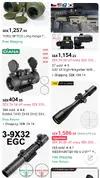World's first 3D printed metal gun blows through 50 rounds
A 3D printing services company
has built a fully functioning, semi-automatic pistol and shown that it works just as a traditionally manufactured gun.
Built by
Solid Concepts, the pistol is a replica of the storied .45-caliber, M1911 semi-automatic that served as the U.S. military’s standard-issue sidearm for more than 70 years. Solid Concept demonstrated the gun by firing 50 rounds with it.
The accuracy? At more than 30 yards, the gun was able to strike a target bull’s-eye several times, Solid Concepts said. The company’s 3D printed .45 caliber M1911 pistol is shown above.
Previously, the only 3D printed gun was
The Liberator, a single-shot plastic weapon made by Defense Distributed. That weapon didn’t prove to be reliable after multiple rounds were fired through it.
How it was made
Solid Concept’s pistol was made with industrial-grade 3D printers using the Selective Laser Sintering (SLS) and Direct Metal Laser Sintering techniques (DMLS). Both
DMLS and SLS use lasers to melt metals, even titanium, at temperatures exceeding 3,000 degrees Fahrenheit. The 3D printers work by laying down a fine layer of powder and then using a laser to fuse granules together, building an object layer by layer from the ground up.
The difference between the two techniques is that DMLS tends to be used with alloys. Here's a Solid Concepts video about the gun:
“The industrial printer we used costs more than my college tuition (and I went to a private university),” Kent Firestone, Solid Concepts’ Vice President of additive manufacturing, said in a statement. “The engineers who run our machines are top of the line; they are experts who know what they’re doing and understand 3D Printing better than anyone in this business. Thanks to them, Solid Concepts is debunking the idea that 3D Printing isn’t a viable solution or isn’t ready for mainstream manufacturing.”
3D printers that use metal sintering techniques function differently from desktop 3D printers that use stereolithography, which melts plastic filaments and pushes them through a small extruder to build objects layer by layer.
Solid Concept’s gun is composed of more than 30 3D-printed components. The slide, frame and many of the internal components are made of stainless Steel. The main spring, the hammer and part of the upper grip’s handle was made with nickel-chromium-based alloy called Inconel 625.
Solid Concepts’ pistol is composed of more than 30 3D printed parts (Image: Solid Concepts)
“Laser sintering is one of the most accurate manufacturing processes available, and more than accurate enough to build the 3D Metal Printed interchangeable and interfacing parts within our 1911 series gun,” Solid Concepts said. “The gun proves laser sintering can meet tight tolerances.”
According to the company, 3D metal printing means fewer porosity issues than are seen with the traditional method of casting metal parts.
Solid Concept said its gun’s barrel experiences chamber pressure above 20,000 psi every time the gun is fired. By comparison, a factory-made M1911 pistol is rated for 17,000 psi chamber pressure.
“We’re proving this is possible, the technology is at a place now where we can manufacture a gun with 3D printing,” Firestone said. “As far as we know, we’re the only 3D-printing service provider with a Federal Firearms License (FFL). Now, if a qualifying customer needs a unique gun part in five days, we can deliver.”
History of the earlier gun
As its name suggests, the Colt M1911 pistol became the military’s sidearm in 1911, after legendary gun designer John Browning developed it more than a decade earlier. Since that time, many manufacturers have copied the design.
Solid Concepts demonstrates its ability to 3D print an M1911 .45 caliber pistol.
The barrel of any modern gun contains rifling—helical grooves that put a spin on a bullet as it is fired. The cork-screw movement of a bullet increases its accuracy.
Solid Concept’s pistol’s rifling was built directly into the barrel using 3D printing. The gun was in no way machined, as guns are traditionally made.
“We did not machine this gun,” the company stated. “It’s born this way.”


 has begun selling 3D Systems' Cube printer through its site, as of this morning. Come the end of June, the WiFi-enabled, semi-portable printer will be hitting a select number of retail locations for $1,300. The Cube's availability follows news of some higher-end 3D printing
has begun selling 3D Systems' Cube printer through its site, as of this morning. Come the end of June, the WiFi-enabled, semi-portable printer will be hitting a select number of retail locations for $1,300. The Cube's availability follows news of some higher-end 3D printing offerings at a very select number of Staples locations. Check the source link below to pick up the Cube in one of five colors -- and if you need some enthusiastic testimonies regarding the revolutionary nature of consumer 3D printing, be sure to click through to the press release below.
offerings at a very select number of Staples locations. Check the source link below to pick up the Cube in one of five colors -- and if you need some enthusiastic testimonies regarding the revolutionary nature of consumer 3D printing, be sure to click through to the press release below.
